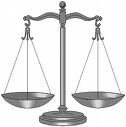Last Friday a federal appeals court rejected a lawsuit filed by the National Association of Broadcasters that would have compelled the Federal Communications Commission (FCC) to deny protection to lower-power FM (LPFM) stations from full power station interference. LPFMs consist of approximately 800 educational stations—operating at 10 to 100 watts—that have committed to eight hours of local programming a day in exchange for their licenses. When the LPFMs were first authorized by the FCC in 2000, high power broadcasters, claiming possible interference, got Congress to force a “third adjacent rule” on the service. No LPFMS could exist within three channels to the left or right of a high power station. It has been the full power broadcasters’ position that the FCC does not have the authority to protect LPFMs from “signal encroachment” from more powerful stations nearby. Nonetheless, the FCC in 2007 set up new rules that limited the responsibility of LPFM stations to resolve interference caused to full-power stations specifically when that alleged interference took place just on the second adjacent channel. The NAB promptly filed suit alleging violation of the Radio Broadcasting Preservation Act (the law that established the “third adjacent rule”) and the Administrative Procedures Act, claiming that the FCC had not provided a reasoned explanation for its new policy. The three judge panel of the U.S. Court of Appeals rejected these arguments and held that the “plain text” of the statute indicates that lawmakers “did not intend to restrain the Commission’s authority to respond to new circumstances potentially threatening LPFM stations.” Petitioners’ arguments were rejected in part and dismissed in part.The actual 18-page decision can be viewed online.
Appeals Court: FCC Can Protect Low-Power FM Radio from Broadcast Interference






